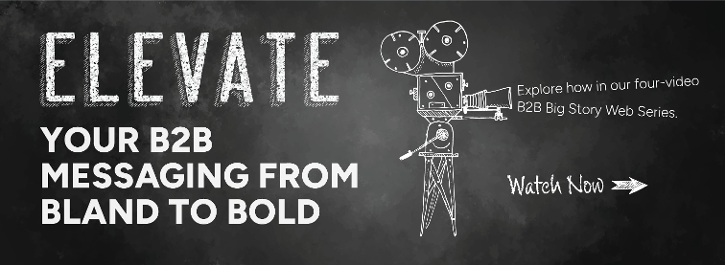
Inbound Marketing Decoded: 8 Proven Tips To Skyrocket Lead Generation
Lead generation is a critical function of marketing. The more high-quality leads your marketing team provides, the better the whole organization functions.
Since lead generation is crucial to a high-performing business, it’s frustrating when your inbound marketing isn’t generating enough leads. No worries, though – it doesn’t take a Ph.D. to develop a successful inbound program if you know where to start.
Here are eight guidelines to follow when building or optimizing your lead generation:
1. Understand the Buyer’s Journey to Make the Right Offers
The journey from prospect to customer is called the buyer’s journey. There are several buyer journey models or frameworks that you should consider, but to generate leads you should be looking for one that has a high level of detail. We recommend the Cyclonic Buyer Journey™ framework, which has eight stages.
Each stage or cyclone represents a different mindset that the prospect is in as they go from being unaware of a problem to:
- Learning about their situation
- Considering various solutions
- Choosing a company that meets their needs
- Feeling satisfied after making a purchase
A prospect in the early stages who is just discovering a problem has different needs than someone who is choosing between you and a few competitors.
Once you determine your prospects’ needs, making relevant and effective offers is much easier.
2. Get to Know Your Personas to Nurture Them Best
You’ll also need to tailor your content to different buyer personas. A persona reflects the preferences and traits of your target market.
A persona focused on value is more likely to respond to a promotional offer than someone who wants the best quality and would rather receive case studies.
Database segmentation allows you to sort your prospective customers into different demographic, psychographic and behavioral groups so that you can offer the most relevant content.
3. Level Up Your Authority With Sources
Even the most compelling content won’t generate leads if nobody sees it. Search engine optimization (SEO) is critical to getting your content in front of the right audience.
Relevance and authority are core to search engine rankings. Relevance is based on how closely your content matches the query, and authority is how the search engine sizes up your website’s credibility.
Building authority is highly dependent on sources. By adding links to websites with high authority, which you can find by using SEO software like Moz, you’ll also build your own credibility. The more credible links you have, the higher your authority. Don’t sacrifice quality for quantity, though – 50 high-authority links will boost your ranking more than 100 low-quality links.
4. Let Your Homepage Tell Your Story
When interviewing for a job, you want to be well-dressed, organized and prepared to make a case for why you’re the best candidate. Pitching your company’s services to a customer can be a lot like convincing an employer to hire you. So, consider your homepage as your interview.
Whether your customer gets to your website from social media, a blog or an email, your homepage will stick with them throughout the entire buyer’s journey. As such, your homepage needs to be well-designed, thought-out and streamlined.
In addition to being technically, visually and organizationally sound, it has to tell your company’s story.
As marketing and leadership best-selling author Simon Sinek explains in his book Start with WHY, not many companies make their purpose the focus of marketing. But this is a mistake, he explains, because people are more drawn to why you do what you do as opposed to what you do or how you do it.
Make your homepage a reflection of your purpose and mission, and customers will be more emotionally connected to your brand and see themselves in your company’s story.
5. Use Dashboards To Make Sure You’re Not Flying Blind
If you’re not collecting and analyzing data, it’s like you’re flying a plane with no flight instruments. Are you willing to take a flight with a pilot who has no idea how high you are, how fast you’re going, what the cabin pressure is or what direction you’re heading? Probably not. So, why would you run your businesses any differently?
Consider dashboards like those available in HubSpot to track key performance indicators (KPIs) such as site traffic, session duration and conversions. Once you know these statistics, you can make more informed decisions to lean into your strengths and improve your weaknesses.
The key here is not the dashboards or the data but rather the insights you uncover buried in the data. Sometimes it takes practice and experience to find those hidden gems, but once you do, your lead generation might just double or even triple.
6. Make Content That Meets Your Customers Where They’re At
Just like your offers and nurturing must be lined up with the buyer’s journey and personas, so do the pages on your website.
Customers in the late stages of their journey are looking for pricing options, implementation guides and FAQs, while early-stage prospects are interested in blogs, videos and pillar pages to learn more.
Once you understand your customers’ buying journey, you should create a map of the questions prospects typically ask based on the stage of their buyer journey. Then make sure those pages are aligned to the stages of the buyer journey, with copy and content that answers their questions.
Do this well and your website conversion rate might just skyrocket.
7. Create Landing Pages That Are All About the End Goal
The purpose of a landing page is to turn a visitor into a prospect and, ultimately, a customer. If you don’t design landing pages with this goal in mind, your lead generation will suffer.
Since you want them to do just one action on this page – fill out the form – take as many other options away. Remove all the navigation and any social or sharing buttons. Focus on the conversion.
Give them a compelling headline that relates to the offer. Share with them exactly what they will get from the offer. Show them a visual of the offer. Include a testimonial from someone else who loved the offer.
But perhaps the most important tip is to keep the form short. Long forms kill conversion rates.
To learn more, check out this detailed blog post from HubSpot on creating great landing pages.
8. Optimize Your Conversion Rates Every Single Month
Maximizing the conversion rate is a great way to improve lead generation. The conversion rate measures how many people take a specific action – for example, if 200 people visit your page and 50 fill out the form, your conversion rate is 25%.
Some good places to start improving conversion rate are:
- Creating CTAs in blog posts. Take your most popular blog articles and make sure they have contextual CTAs in both text and graphic formats.
- Running A/B tests on your landing page to see what changes work best. Test the headlines, copy, images and forms – test everything. Remember to make only one small change and then let it run. Changing more than one element at a time will ruin your experiment.
- Including a lot of conversion points that use buttons. Try making the button copy first person – Download My E-book, Schedule My Session, etc. These might feel weird conversationally, but first-person buttons outperform all others by roughly 30%.
Generating leads takes work. While there’s no silver bullet to attracting customers, if you focus on the buyer’s journey for your personas, you can gain traction and generate the high-quality leads needed to reach your revenue goals.
Gabe Miller
Eliminate Hit-or-Miss Marketing Moves
Get advice, tips, tools and guidance to generate more leads for your company in this weekly email newsletter.



Eliminate Hit-or-Miss Marketing Moves
Get advice, tips, tools and guidance to generate more leads for your company in this weekly email newsletter.














